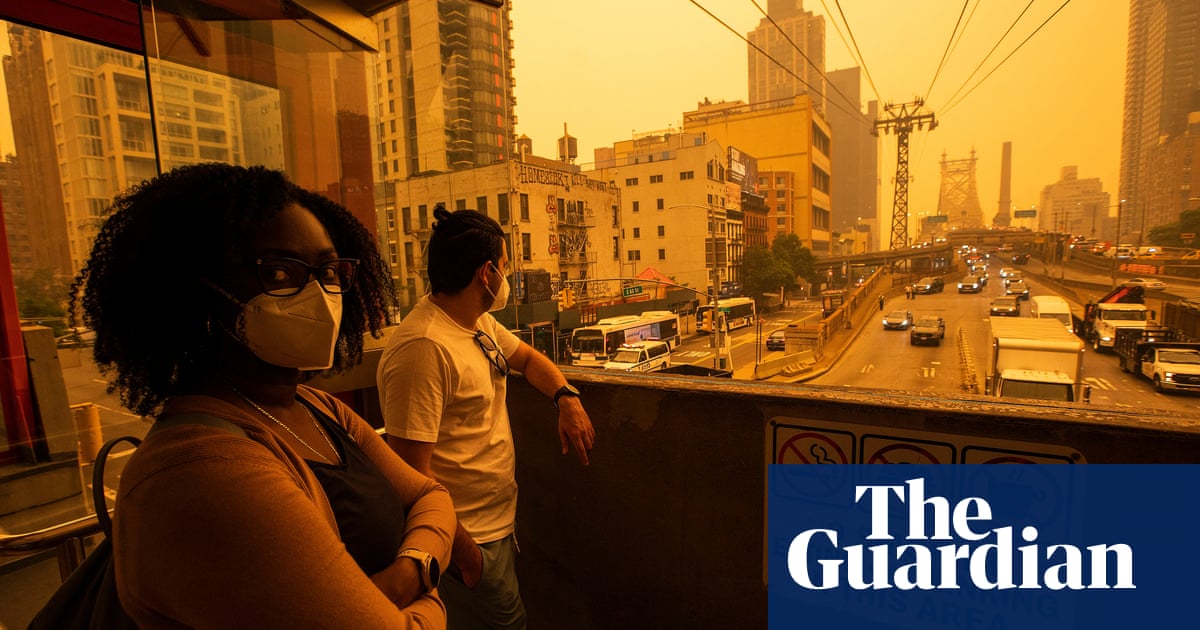Vast swaths of US will be exposed to polluted air by 2054, says report
Vast swaths of US will be exposed to polluted air by 2054, says report The Guardian US


Vast Swaths of the Continental US to be Exposed to Unhealthy Air by 2054

According to an alarming new report, vast swaths of the continental US will be exposed to unhealthy, polluted air by 2054. This poses a significant threat to public health and the environment, highlighting the urgent need for action to address air pollution and achieve the Sustainable Development Goals (SDGs).
Increasing Exposure to Unhealthy Air
- Researchers at First Street Foundation, a non-profit organization that analyzes climate risk, have found that one in four Americans are already exposed to air that is deemed “unhealthy” by the Air Quality Index (AQI).
- This number is expected to grow by 50% in the next few decades, with an estimated total of 125 million Americans experiencing dangerous air pollution by the middle of the century.
Impact of Climate Change
- The report highlights that climate-related wildfires and heatwaves are undoing many of the gains from federal clean air regulations.
- Between 2010 and 2016, the United States saw an increase in air pollution for the first time in 80 years.
Addressing the Origin of Air Pollutants
- To combat air pollution, it is crucial to address the origin of air pollutants, which are primarily wildfires and extreme heat.
- Investing in mitigation strategies like controlled burns can help reduce the impact of wildfires on air quality.
No Safe Amount of Exposure to PM2.5
- Air pollution caused by PM2.5, tiny air pollutants that can penetrate deep into a person’s lungs, poses significant health risks.
- A recent study found that there is no safe amount of exposure to PM2.5.
The Role of Government and Policy
- The federal government successfully reduced air pollution between 1950 and 2010 through initiatives like the Clean Air Act.
- However, the Clean Air Act is ill-equipped to tackle modern drivers of air pollution, such as wildfires.
- Regulators should focus on addressing the pollution caused by wildfire smoke and implement effective mitigation strategies.
Disproportionate Impact on Vulnerable Communities
- Vulnerable communities, particularly Black Americans, bear the brunt of the public health consequences of dirty air.
- Discriminatory decisions over the placement of highways and industrial facilities have led to Black people being exposed to 38% more polluted air than white people.
- These communities are also less likely to have access to tools like air purifiers and high-quality air filtration systems.
Protecting Workers and Ensuring Health Equity
- Workers who are exposed to air pollution, especially those who work outdoors, face significant health risks.
- Labor laws need to adapt to the climate crisis and offer protections for workers on days when air pollution is dangerous.
- Legal protections should be in place to ensure the responsibility for addressing air pollution is not solely placed on individual workers.
SDGs, Targets, and Indicators Analysis
1. Which SDGs are addressed or connected to the issues highlighted in the article?
- SDG 3: Good Health and Well-being
- SDG 10: Reduced Inequalities
- SDG 13: Climate Action
The article discusses the impact of air pollution on public health, particularly the exposure to unhealthy air and its consequences. This relates to SDG 3, which aims to ensure healthy lives and promote well-being for all at all ages. The article also highlights the disproportionate impact of air pollution on vulnerable communities, particularly Black Americans, which connects to SDG 10, which focuses on reducing inequalities. Additionally, the article mentions the role of climate-related factors such as wildfires and heatwaves in contributing to air pollution, aligning with SDG 13, which addresses climate action.
2. What specific targets under those SDGs can be identified based on the article’s content?
- Target 3.9: By 2030, substantially reduce the number of deaths and illnesses from hazardous chemicals and air, water, and soil pollution and contamination.
- Target 10.2: By 2030, empower and promote the social, economic, and political inclusion of all, irrespective of age, sex, disability, race, ethnicity, origin, religion or economic or other status.
- Target 13.1: Strengthen resilience and adaptive capacity to climate-related hazards and natural disasters in all countries.
The article emphasizes the need to address air pollution to reduce deaths and illnesses caused by hazardous chemicals and pollution. This aligns with Target 3.9 under SDG 3. The article also highlights the inequalities in exposure to air pollution, particularly among Black Americans, which relates to Target 10.2 under SDG 10. Additionally, the mention of climate-related factors contributing to air pollution connects to Target 13.1 under SDG 13, which focuses on building resilience to climate-related hazards.
3. Are there any indicators mentioned or implied in the article that can be used to measure progress towards the identified targets?
- Indicator 3.9.1: Mortality rate attributed to household and ambient air pollution.
- Indicator 10.2.1: Proportion of people living below 50 percent of median income, by age, sex, and disability.
- Indicator 13.1.1: Number of deaths, missing persons, and directly affected persons attributed to disasters per 100,000 population.
The article mentions the impact of air pollution on mortality rates, which can be measured using Indicator 3.9.1 under SDG 3. The article also highlights the disparities in exposure to air pollution based on income and race, which can be measured using Indicator 10.2.1 under SDG 10. Additionally, the article discusses the health consequences of climate-related hazards, which can be measured using Indicator 13.1.1 under SDG 13.
4. Table: SDGs, Targets, and Indicators
| SDGs | Targets | Indicators |
|---|---|---|
| SDG 3: Good Health and Well-being | Target 3.9: By 2030, substantially reduce the number of deaths and illnesses from hazardous chemicals and air, water, and soil pollution and contamination. | Indicator 3.9.1: Mortality rate attributed to household and ambient air pollution. |
| SDG 10: Reduced Inequalities | Target 10.2: By 2030, empower and promote the social, economic, and political inclusion of all, irrespective of age, sex, disability, race, ethnicity, origin, religion or economic or other status. | Indicator 10.2.1: Proportion of people living below 50 percent of median income, by age, sex, and disability. |
| SDG 13: Climate Action | Target 13.1: Strengthen resilience and adaptive capacity to climate-related hazards and natural disasters in all countries. | Indicator 13.1.1: Number of deaths, missing persons, and directly affected persons attributed to disasters per 100,000 population. |
Behold! This splendid article springs forth from the wellspring of knowledge, shaped by a wondrous proprietary AI technology that delved into a vast ocean of data, illuminating the path towards the Sustainable Development Goals. Remember that all rights are reserved by SDG Investors LLC, empowering us to champion progress together.
Source: theguardian.com

Join us, as fellow seekers of change, on a transformative journey at https://sdgtalks.ai/welcome, where you can become a member and actively contribute to shaping a brighter future.







